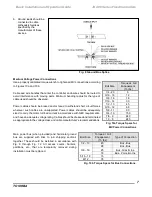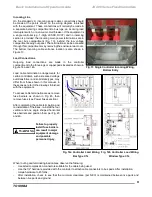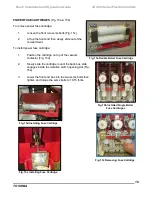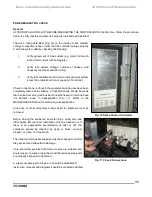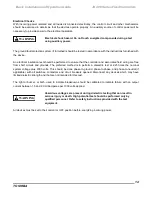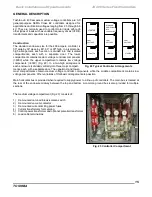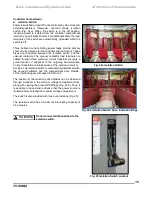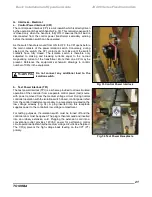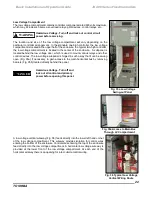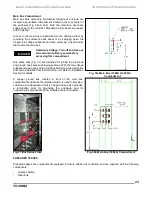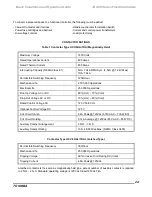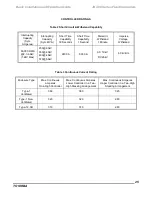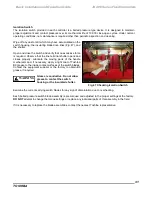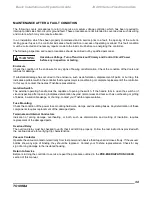
Basic Installation and Operation Guide
JK 400 Series Fixed Controllers
TOSHIBA
21
G. Interlocks - Electrical
a. Control Power Interlock (CPI)
The control power interlock (CPI) is a microswitch which is directly driven
by the operation of the switch handle (
Fig. 3
3). This normally open switch
is closed only when the handle is fully ON. It ensures that all load is
disconnected from the control power transformer secondary winding
before the isolation switch can be operated.
As the switch handle is moved from ON to OFF, the CPI opens before
the main contacts of the power isolation switch. Conversely, during
closing of the switch, the CPI contacts do not close until the switch
contacts have fully closed. The isolation switch is therefore only
subjected to making and breaking currents equal to the no-load
magnetizing current of the transformer.
More than one CPI may be
present. Reference the equipment’s schematic drawings to confirm
number of CPIs in the equipment.
Do not connect any additional load to the
isolation switch.
Fig. 33 Control Power Interlock
b. Test Power Interlock (TPI)
The test power interlock (TPI) is a scheme provided to allow simulated
operation of the controller from a separate control power (test) source
with power removed from the medium voltage circuit. During normal
controller operation with the isolation switch closed, control power is fed
from the control transformer secondary to a receptacle mounted on the
low voltage wireway (
Fig. 3
4). A plug inserted into this receptacle
supplies power to the controller's low voltage compartment.
For testing purposes, the isolation switch must be turned off and the
controller door must be opened. The plug is then removed and inserted
into an ordinary extension cord. Plugging the extension cord into a
conventional outlet provides 120VAC power
for performing control
circuit operational tests while the medium voltage circuit is de-energized.
The CPI(s) prevent the high voltage back feeding on the CPT (PT)
primary.
Fig. 34 Test Power Receptacle
WARNING

